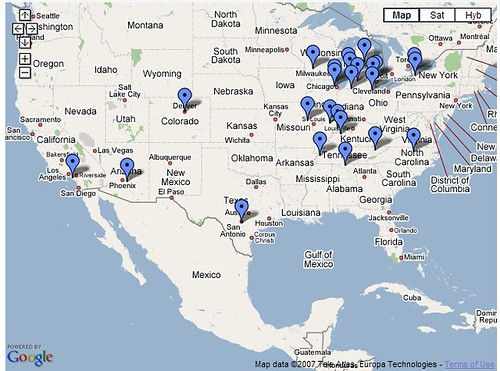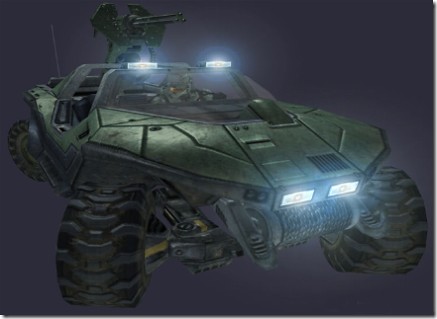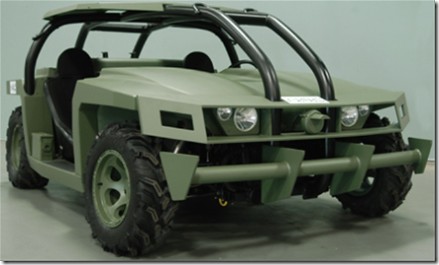 All Entries in the "TundraHeadquarters.com" Category
All Entries in the "TundraHeadquarters.com" Category
Toyota Tundra Bed Bounce: Owners Survey
When we received Toyota’s response to our bed bounce email we realized a few things. In no particular order, here’s what we think:
1. Toyota can’t officially acknowledge the problem until they’re prepared to act.
2. Until the current owner community publicizes the problem, Toyota has no reason to acknowledge it.
3. There is no independent data to verify the size, scope, and severity of this problem.
We decided the best way to make Toyota acknowledge the problem (and therefore do something about it) is to gather some hard data. To that end, we’ve created a Toyota Tundra Owners Bed Bounce Survey. The results of the survey will be published on an ongoing basis once we’ve received enough responses to create some statistically significant data.
In order to make sure the data we gather is accurate, we’re going to verify owner responses a few different ways. First, we’ve got a VIN number checker that will make sure the VIN number entered is accurate and is comparable to the stated equipment on the vehicle. Second, we’re going to verify your email address by sending you a quick note. Third, we’ve got some measures in place to keep people from entering multiple surveys, etc. Hopefully all of these efforts will deter anyone intent on entering false info.
Just so we’re clear — your name, email, and VIN number are for verification purposes only. We’re not going to share this info with anyone, ever, under any circumstance. We’re not going to use your info for marketing purposes or mailing lists or any of that business — we just want to get an accurate picture of Tundra Bed Bounce that we can share with the community. Your responses will be tabulated and published on an ongoing basis.
So, in summary, if you or anyone you know has experienced “bed bounce” with their new Tundra, please complete our Tundra Bed Bounce Survey. If you’ve never experienced bed bounce, please don’t complete a survey. We’re only collecting data from people that have actually experienced the problem so we can determine the severity, frequency, and geographic location. We intend to provide all this information to the public
Finally, if you or anyone you know hasn’t contacted Toyota’s customer service department, please consider doing so. You can send Toyota an email or call them at 800-331-4331 to make an official complaint. Making an official complaint increases the likelihood that Toyota will address the problem.
Tell everyone you know about this survey — we want to have as much data as possible the next time we contact Toyota.
Search terms people used to find this page:
- tundraheadquarters
Bed Bounce: Toyota’s Response To Our First Email
Earlier this week, we sent Toyota a request for information about the Tundra bed bounce issue. We described our understanding of the issue, our position as an advocate of the Tundra community, and then requested the following:
1. Have Toyota’s engineering and/or quality teams been informed of this issue?
2. Are there any tests currently in progress to diagnose this problem?
3. Has a fix for this problem been devised? If so, when will it be available?
4. What steps can current owners that are suffering from this problem take to make sure they’re given priority when a fix becomes available?
5. Is this issue being corrected on the 2008 model?
We had high hopes that Toyota would communicate with us about this issue, but instead they replied with something that basically amounts to a non-response stating:
“As of today, Toyota has not issued a Special Service Campaigns (SSC) or Technical Service Bulletins (TSB) for the concern you have described.”
Clearly, this response is intended not to fan the flames of discontent. While they didn’t acknowledge the bed bounce issue, they didn’t deny it either. After some careful thought, we’ve decided we need more data before we can effectively pursue this with Toyota. Our thinking here is simple — if we’re able to present Toyota with hard facts indicating the number of owners that have had this problem, the average severity of the problem, when and where it occurs, etc., we’ll have something that Toyota won’t be able to ignore. An additional benefit to gathering this data is that we’ll be able to share the results with current owners and prospective buyers. Hopefully, this will be a benefit to everyone.
We’re working on finding a good tool to gather this data, and we hope to have something ready by the end of the weekend. In the interim, if you have any suggestions about the data we should gather and/or comments on Toyota’s response, please leave a comment.
Where do Tundras Come From?
Ever wonder where all the parts that make up the new Toyota Tundra come from? Here’s a link to a U.S. map with some of the parts suppliers and their respective locations:

Toyota Tundra Supplier Location Map
It isn’t a complete list — Toyota doesn’t publish this information, so you have to find out the old fashioned way. If you find any errors, or if you work for a supplier that makes parts for the new Tundra, contact us with your company’s name, address, and the part(s) made, and we’ll add it to the map.
Bed Bounce: The Clock Is Ticking
Based on the response from the last two posts, we’ve come to the realization that the Tundra has an issue with bed bounce. While it’s still unclear exactly how many people are affected, considering the demonstrated severity of this issue we feel it is important to discuss.
Without going into details (at this time), we’ve contacted Toyota and requested an official response to the bed bounce issue. We’re not exactly sure when Toyota will respond, but we hope it is very soon. As one of the only websites on the internet focused on the new Tundra, we feel it is our responsibility to pursue this issue on behalf of the community.
Our goal is to start a conversation with Toyota that will ultimately lead to a resolution of this problem. We’ll keep you updated and share any information we receive from Toyota.
New US Army Diesel Hybrid: Fast, Quiet, Gas $aver
Here’s a trivia fact: the U.S. Army 1st Armored Division uses approximately 600,000 gallons of fuel.
A day.
That’s enough fuel to fill-up all the Tundra’s sold in June 07′. It’s enough fuel to coat a standard football field in 17 inches of fuel (trying running a sweep in that mess). It’s also enough fuel to drive your new Tundra for the next 720 years.
In other words, it’s a lot. Too much if you ask the US Army. Considering that 70% of what the Army hauls to the battlefield is fuel (not ammo, not food, but fuel), any opportunities to reduce fuel consumption are investigated seriously. That’s why the Army gave Quantum Technologies of Irvine, CA a $4.88 million contract to develop this prototype:

Just kidding — that’s the Warthog from Halo. Here’s the REAL prototype:

You can see how we might get the two confused.
The prototype, known as the U.S. Army Alternative Mobility Vehicle (AMV) Aggressor, is powered by a battery pack that is charged by a yet-to-be-determined diesel. While the main benefit of having a battlefield hybrid is fuel savings, the Aggressor also has a “silent” battery-only mode that allows the vehicle to move with little or no noise. Unlike most consumer hybrids, the Aggressor is fast. O-40 in about 4 seconds. We know — it’s not as fast as a new Tundra — but it’s not bad. Besides, does your Tundra have a S.A.W. attached to it?
What does this mean for us? A few things.
1. When the military develops a battlefield diesel hybrid, we’re all that much closer to seeing one parked in our own driveways.
2. Hybrid technology is powerful and durable enough to be considered for a vehicle used in combat. That means the whole “hybrid” thing is probably here to stay.
3. Toyota currently produces a diesel hybrid for sale in Japan and Australia. It’s called the Hino Dutro Hybrid. Coincidence? Definitely. But it’s easy to imagine a diesel hybrid Tundra someday soon.
Search terms people used to find this page:
- tundraheadquarters

